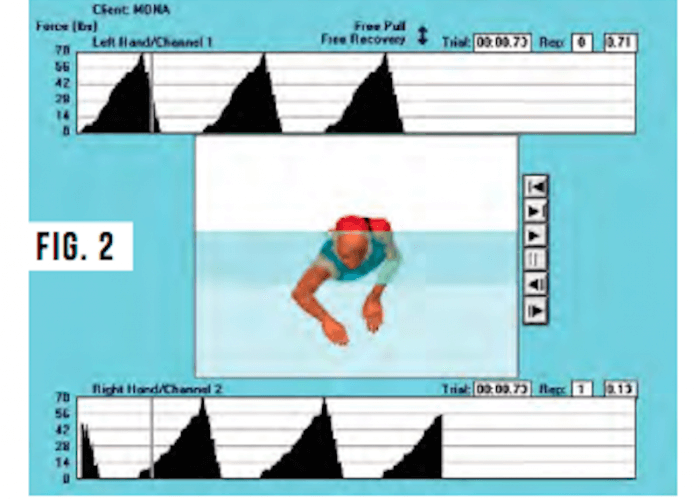How to Benefit From An Unconventional Taper

By Ryan Gibbons, Swimming World College Intern.
The holiday season brings so much with it – the joy of friends and family, the excitement of large invitationals, and unimaginable amounts of food and cookies. Yet, it frequently also entails a great obstacle for swimmers: the oddly-timed, unconventional taper.
Unlike a traditional rest cycle for the conference or national championship, swimmers experience the unconventional taper earlier in the season – frequently in November and December. Championship meets frequently occur in sequence, and tapers must work around numerous competitions to strategically reach certain levels of performance at specific competitions. Thus, many cycles may stray from the normal two or three week cycle: either lasting for an extended period of time or including numerous competitions, each which a certain specific performance goal.
While these out-of-the-ordinary taper cycles can be stressful and unpredictable, overall peak performance is not unattainable – nor is achieving it outside of a swimmer’s control. With proper preparation and care, the extended/unconventional taper can turn from a dreaded trap to a phenomenal championship season.
Maintaining Training Patterns

Photo Courtesy: Instagram, @swimoutlet
The key to any rest period is maintaining at least a slight amount of high-speed training. With an extended or unconventional taper, this is especially critical: maintaining shape for weeks on end requires a good amount of intermittent work. Professor Brent S. Rushall of San Diego State University maintains this need for periodic intensity, noting that alternating periods of high- and low- intensity training can frequently extend the effective length of a taper.
While a decrease in volume is certainly expected, the re-institution of longer or more intense practices should be an accepted aspect of a longer cycle, even if this may directly alter day-to-day performance. With the ultimate goal of reaching peak performance at numerous times, accepting a day or two of tougher training may be necessary.
Focusing on Form

Photo Courtesy: Swimming World Magazine
Just because the overall intensity of in-season training is gone doesn’t mean that great improvements can’t happen while resting. Especially when a swimmer is granted weeks of glorious taper, the opportunity to focus on technique – especially in the absence of extensive physical stress – is not one to be missed.
Simply focusing on proper form, working turns and breakouts, and perfecting some stroke aspects that may have slipped a bit during the season can work wonders on end-of-season performance. Taking the time to push a little more on the detail-oriented aspects of the sport can bring huge benefits come race time.
Building Positivity and Confidence

Photo Courtesy: Dan D’Addona
As mentioned earlier, any rest period is going to be a wild roller coaster of ups and downs – no taper is complete without its deal of “off” days. An extended or unusual taper only exaggerates this process. While these variations shouldn’t be ignored, focusing only on the negative days of a taper ignores the ultimately incredible performances at the end.
A taper can seem to reverse itself in a matter of hours: one practice may be painful and tiresome, yet the next practice may see the best pace held all season. The mental key to any successful taper, especially in an unconventional cycle, lies entirely in focusing on the positive days and trusting your coach and your body to produce the best possible results. Accepting some tougher times and letting go the negativity associated with them can ultimately prove a crucial aspect of a successful taper.
Taking Care Outside of the Pool

Photo Courtesy: Buenosia Carol
When a taper lasts for weeks on end, it can be mentally daunting to stay healthy, disciplined, and cautious. However, as a taper gets longer and less predictable, eating healthily, maintaining a disciplined sleep schedule, and properly hydrating becomes even more critical. Without maintaining healthy habits, the work put in to a season and taper can quickly fall apart.
In addition to health habits, a healthy stretching routine can also help foster peak performance throughout a taper. James Camarinos of the Ryan Center for Sports Medicine and Rehabilitation recommends light, static stretching in the evening or post workout as a means of improving athletic performance. Routine stretches without overstretching can be an additional aspect of a successful taper.
It’s true that an extended taper can be a stressful, anxiety-inducing process for swimmers; however, taking adequate steps to prepare oneself for competition can turn these tapers from dreaded cycles into opportunities for incredible performances. Capitalizing on a season’s worth of hard work with a successful rest period is one of the greatest parts of the sport. By learning to use a complicated taper as an advantage rather than an obstacle, swimmers can find substantial success in what can appear to be some of their roughest situations.
All commentaries are the opinion of the author and do not necessarily reflect the views of Swimming World Magazine nor its staff.



